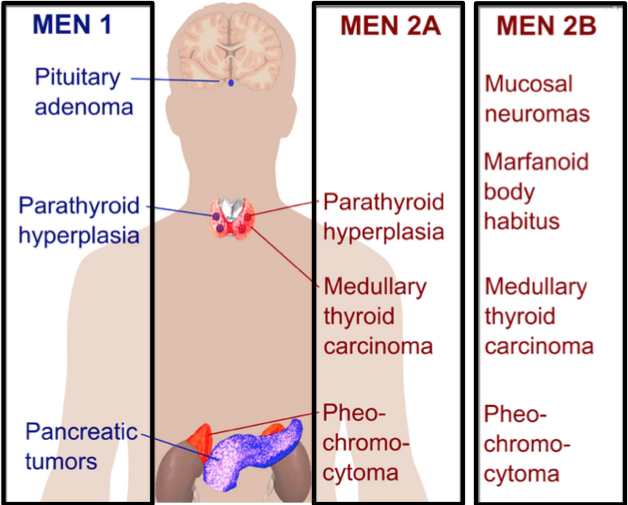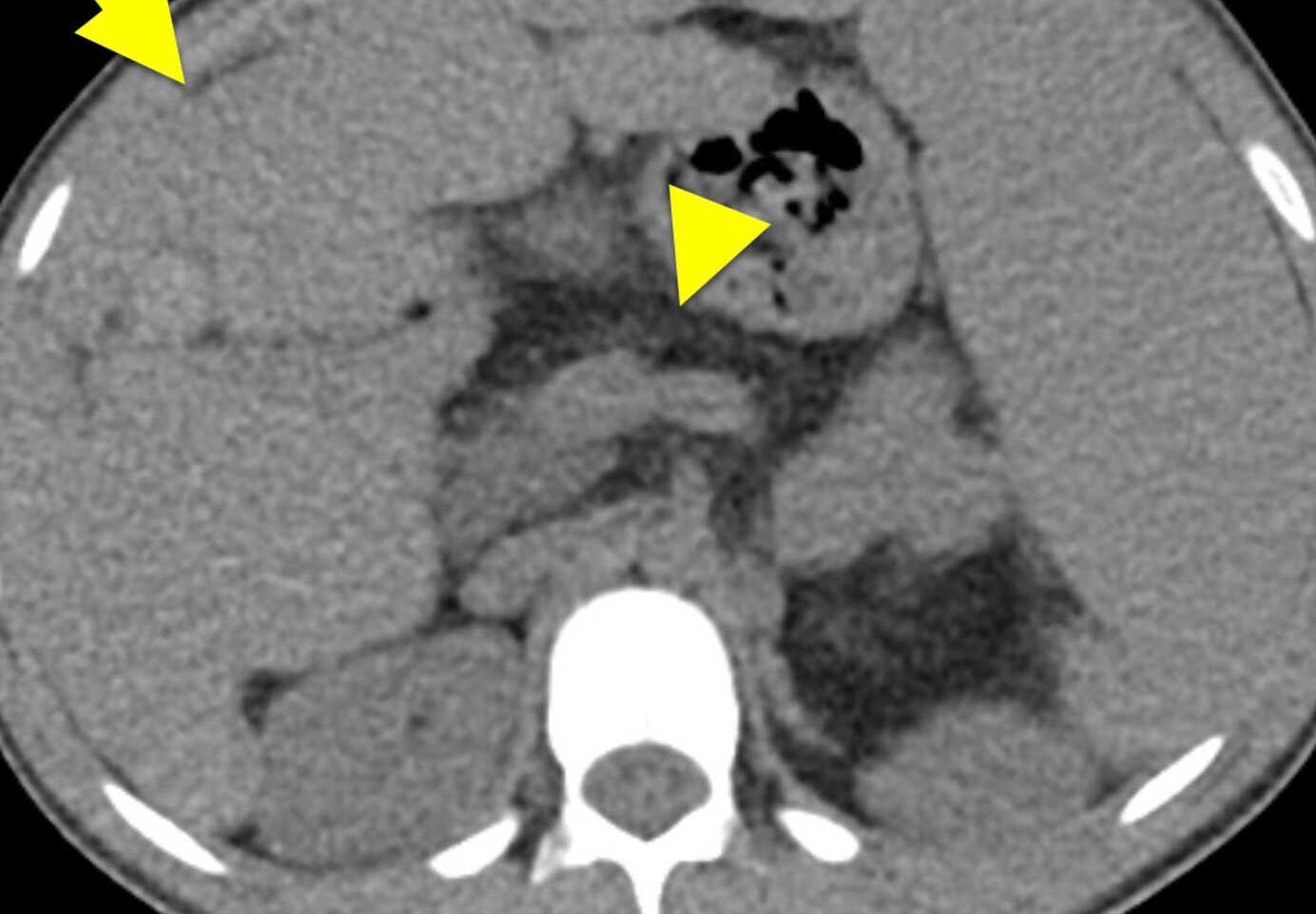Multiple Endocrine Neoplasia(MEN)
These are conditions that cause overactivity and enlargement in certain endocrine glands. MEN syndromes are usually (but not always) inherited conditions and therefore they run in families. When they are inherited, they are passed from one generation to the next.
There are three main types of multiple endocrine neoplasia (MEN) – MEN 1, MEN 2a and MEN2b.
MEN 1 = Parathyroid tumors, pancreatic tumors, and pituitary tumors.
MEN 2a = Medullary thyroid cancers (MTC), pheochromocytoma, and parathyroid tumors.
MEN 2b = Medullary thyroid cancers, pheochromocytoma and neuromas.

There are specific genetic causes for each of the three types of MEN. Any particular MEN family will have only one type of MEN, either MEN 1, MEN 2a or MEN 2b.


MEN1 (Wermer’s Syndrome)
When parathyroid gland is involved:
Most Common (MC) endocrine abnormality.
Hyperparathyroidism is MC manifestation(cardinal sign is parathyroid adenoma).
Hypercalcemia is 1st biochemical abnormality detected in MEN1.
When pancreas is involved
It is the 2nd MC manifestation
Secrete pancreatic polypeptide which is non functioning type
Functioning type in MEN 1 is gastrinoma followed by insulinoma
MC increased pancreatic hormone: Pancreatic polypeptide>Gastrin>Insulin(PGI)
Some people with type 1 disease develop pituitary gland tumors. Some of these tumors produce the hormone prolactin, causing menstrual abnormalities and often breast secretions (galactorrhea) in women who are not nursing and decreased sexual desire and erectile dysfunction (impotence) in men.
In some people with type 1 disease, tumors or excessive growth and activity of the thyroid and adrenal glands develop. A small percentage of people develop a different type of tumor, known as carcinoid tumors.
Diagnosis
- Genetic tests
- Hormone levels in blood and urine
- Imaging tests
Tests are available to identify the genetic abnormality present in each of the multiple endocrine neoplasia syndromes. Doctors usually do these genetic tests in people who have one of the tumors typical of multiple endocrine neoplasia and in family members of people already diagnosed with one of the syndromes. Screening of family members, sometimes even before birth, is particularly important because about half of the children of people with a multiple endocrine neoplasia syndrome inherit the disease.
Blood and urine tests are done to detect elevated hormone levels.
Imaging tests, such as ultrasonography, computed tomography (CT), magnetic resonance imaging (MRI), and positron emission tomography (PET), are also needed to help doctors determine locations of the tumors.
Treatment
- Tumor removal
- Often removal of the thyroid gland
- Drugs
No cure is known for any of the multiple endocrine neoplasia syndromes. Doctors treat the changes in each gland individually.
A tumor is treated by removing it surgically when possible. Some small pancreatic islet cell tumors are not removed immediately but are monitored to see whether they are increasing and treated if they become large enough to cause problems.






great!!! thank u so much!
If you share our notes, it will motivate us to post more. Thank you…